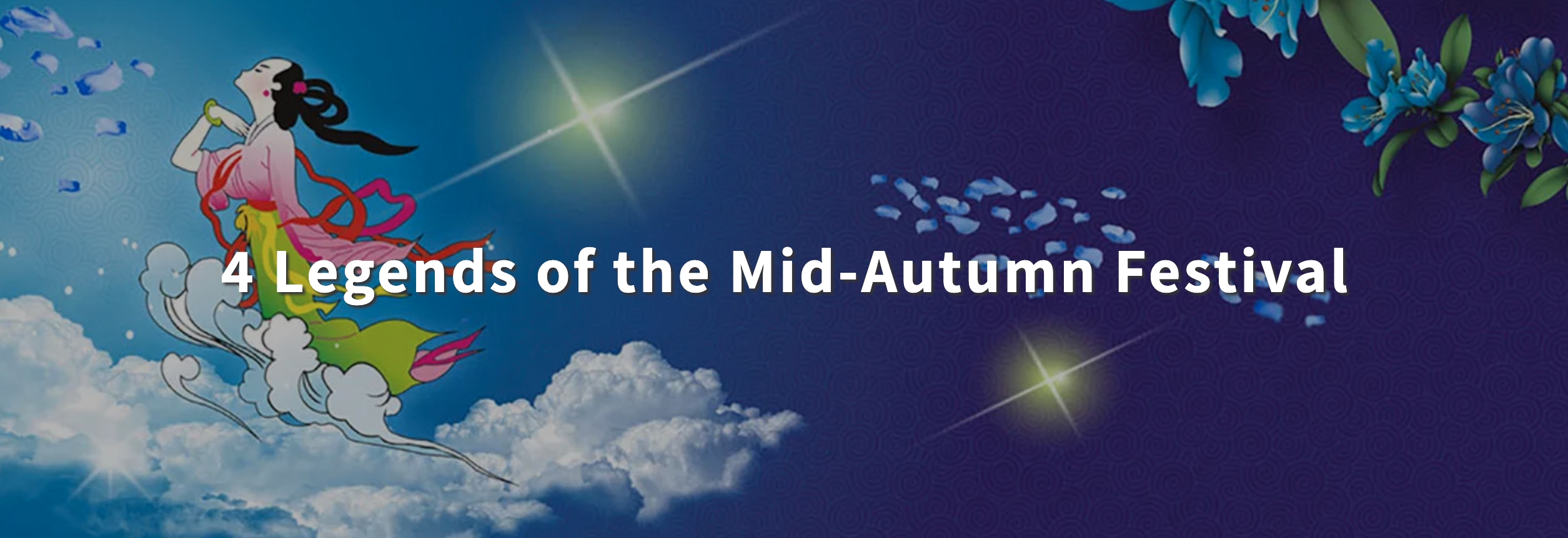
18 Sep 4 Legends of the Mid-Autumn Festival
There is an abundance of magical legends about the Mid-Autumn Festival. The “Lady Chang’e Flying to the moon”, “Jade Rabbit Mashing Herbs” and “Wu Gang Cutting Sweet Osmanthus” stories are among the many legends which are popular as folk tales. These fictional stories denote the ancestors’ instinctive desire to struggle for life in nature.
The Lady Chang’e Flying to the Moon
The legend has it that there were 10 suns in the sky. Hou Yi, a brilliant archer, used his bow and arrow to shoot down 9 of them. Then, he was rewarded with an elixir for his great contribution by the Queen Mother of West. However, he was unwilling to drink it to be immortal without his wife Chang’e. So he entrusted the elixir to Chang’e to keep. Pang Meng, a student of Hou Yi, heard about this and wanted to seize the elixir. When Hou Yi left home to go hunting, he went to Hou Yi’s home and forced Chang’e to give him the elixir. Chang’e could not defeat the man, so she drank the elixir and flew to the sky. Because she didn’t want to forsake her husband, she flew to the moon to live there. After hearing about this, Hou Yi felt immensely sad and arranged a table by placing on it some fruit and food to wish for his wife to come back.
But this story has another version, which depicts Chang’e as a beautiful and selfish lady. She was tired of the secular world, and wanted to become immortal. When flying to the moon, she changed into a toad.
Even though the plots of the stories develop differently, the end is similar. In ancient times, people generally believed that an extremely beautiful fairy is living in the moon, maidens worship the moon and hope that they could be as beautiful as Chang’e.
The legends seemed clearly absurd, but express the ancestors’ instinctive desire as they struggled for long life and to produce offspring. Swallowing elixir implies a practical intention to defeat the circle of life in a dangerous environment. Beautiful Chang’e turning into a toad, seems to deface her pretty image, but actually, the toad was considered a powerful divine symbol in matriarchal society for its fertility. Flying to the moon indicates a ritual practice of chasing the moon, in which ancestors want to be close to the god they worship.
Hou Yi Making Cakes
When Chang’e was living in the moon, she and her husband missed each other. One day, an immortal told him that he should make some round cakes from flour and place them toward the northwest in the house, at the same time, shouting the name of his wife. In this way, they would reunite on the Mid-Autumn Festival. Hou Yi did all the things according to what the immortal said, and thus he met Chang’e as was his wish. Later, this kind of cake gradually developed into the various moon cakes.
Wu Gang Cleaving Sweet Osmanthus Tree
A man named Wu Gang was cutting the huge and flourishing Osmanthus in the moon. He kept cutting the tree day after day but he still could not cut it down, because the sweet Osmanthus tree could heal every time as soon as he chopped it. Wu Gang followed an immortal in order to learn, but he made a serious mistake, and therefore he was punished with having to do the hard work. In early Chinese culture, ancestors had realized that endless and repeated labor is the cruelest punishment to destroy one’s flesh and spirit. And the sweet Osmanthus tree represents the magical power of regeneration that ancestors were yearning for.
Jade Rabbit Mashing Herbs
In this fairy tale about the moon, there is a rabbit as white as polished jade, named the Jade Rabbit, who is mashing herbs with a pestle day by day for elixir. Legend has it that Hou Yi turned into a rabbit for accompanying his wife, but his wife still didn’t know that the rabbit was the man she was missing night and day.
If you want to know more about China history please follow : yuanyicraft.com or email: 1@yuanyicraft.com

No Comments